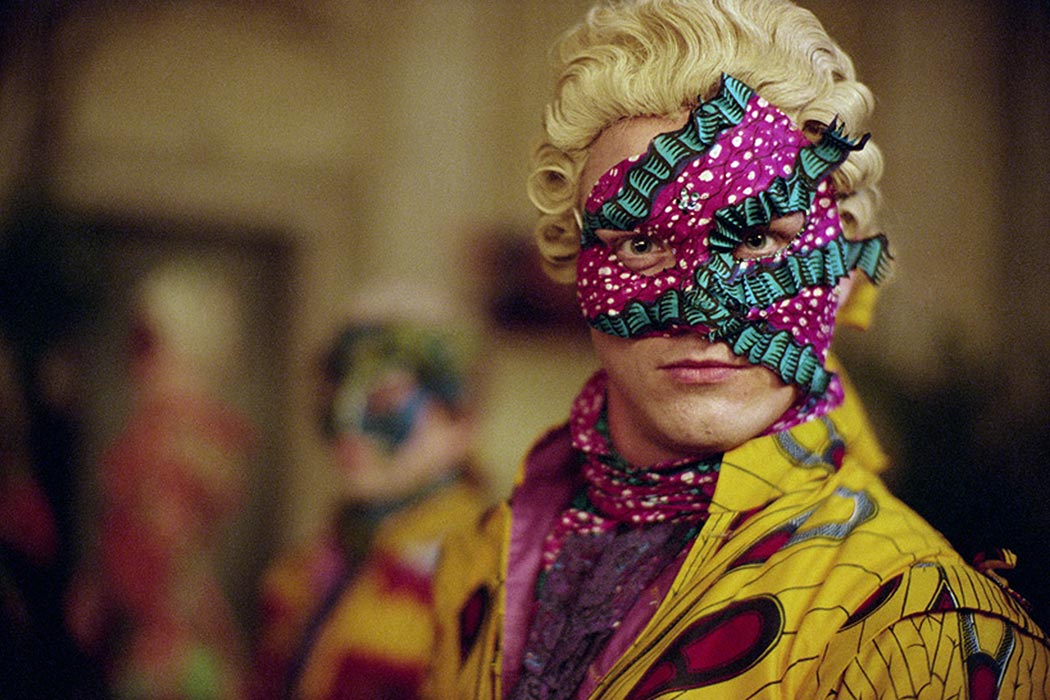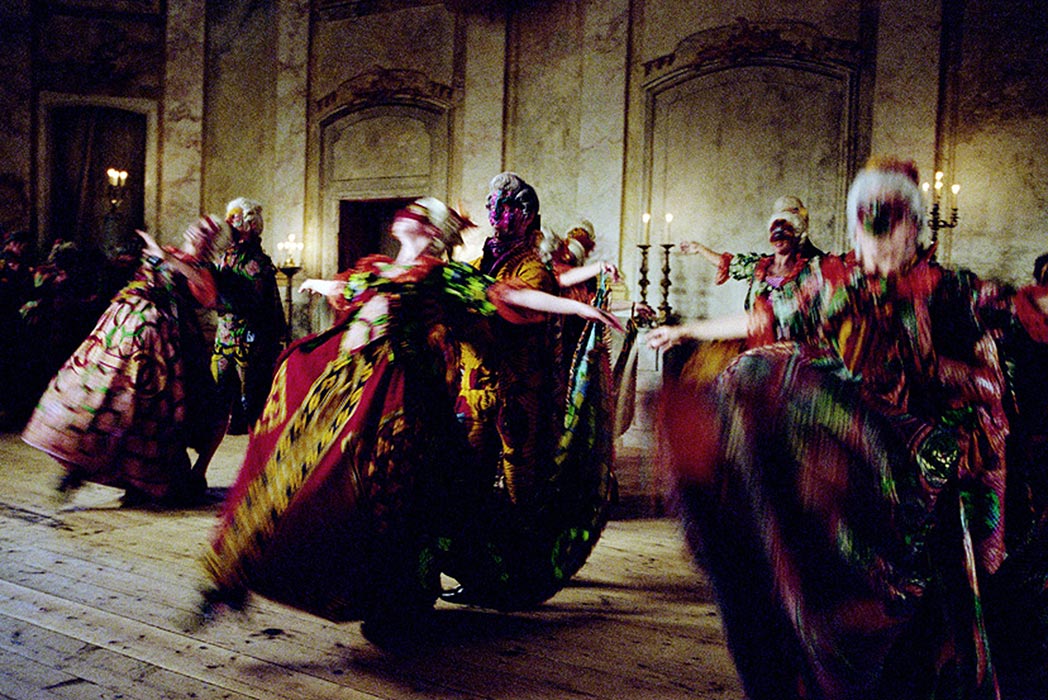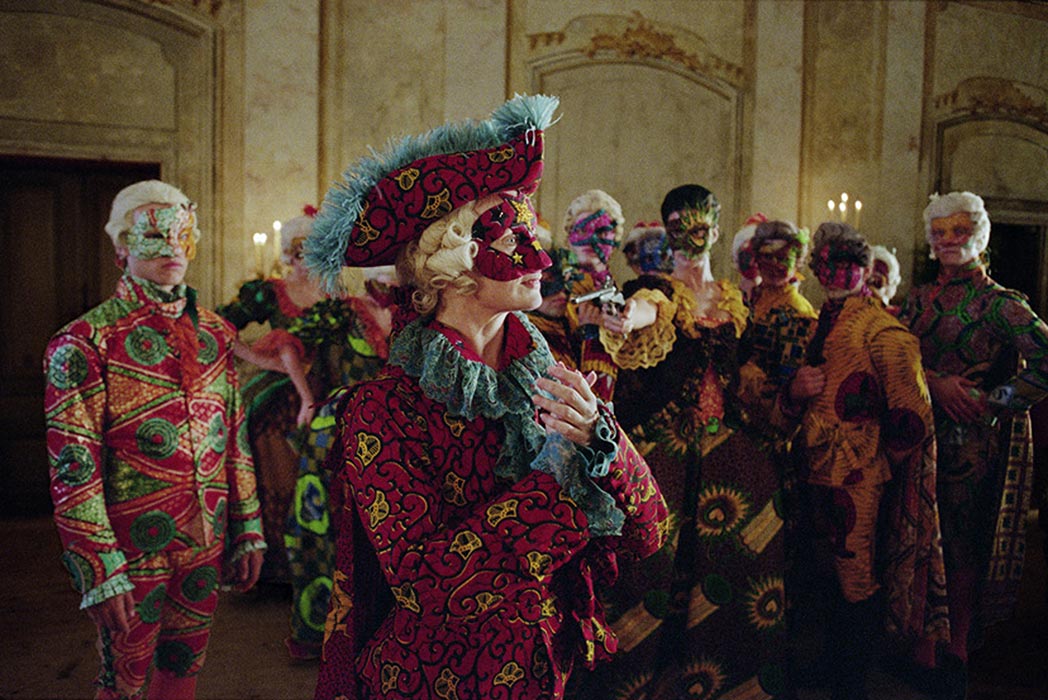The Los Angeles County Museum of Art (LACMA)’s exhibit “Senses of Time” focuses on five African artists working with film, including the work of Berni Searle, Sammy Baloji, Theo Eshetu, Moataz Nasr, and Yinka Shonibare.
Anthony Downey interviewed Yinka Shonibare, MBE to learn more about the artist’s first film which LACMA featured. In Un Ballo in MascheraA Masked Ball) 2004, Shonibare dramatically tells the story of the Swedish King Gustav’s assassination in 1792. Un Ballo in Maschera provides a postcolonial, revisionist feast for the eyes and political choose-your-own adventure that plays with the slipperiness and unfixed nature of both identity-making and history-telling. True to Shonibare’s usual style, themes, and aesthetic, he explores the ambiguities of race, identity, class, and gender in a nonconventional, choreographed film featuring high fashion and zero dialogue. (Warning: the following film clip includes stage gunshots.)
Shonibare’s actors wear elaborate costumes featuring fashion styles of the 1800s, cut from completely foreign fabric. Downey introduces Shonibare’s use of Dutch wax fabric, a tell-tale sign of Shonibare’s work and one that continues to trouble viewers’ often-fixed notions of identity and authenticity.
Dutch wax fabric was initially made in Dutch Indonesia, where buyers did not want to purchase the imitation-batik. The English, however, began to copy this fabric and brought it to their colonies to sell in West Africa, offering a cheaper alternative to hand-dyed traditional fabrics. As Downey explains, “[a] colonial invention, Dutch wax fabric offers itself as both a fake and yet ‘authentic’ sign of Africanness, and Shonibare’s use of it in his paintings and sculptures accentuates a politics of (in)authenticity by simultaneously presenting both the ideal of an ‘authentic’ identity and identity as a ‘fabrication.’”
Nancy Hynes and John Picton analyze Shonibare’s use of dress and fabrication in depth:
The cloth is an apt metaphor for the entangled relationship between Africa and Europe and how the two continents have invented each other, in ways currently overlooked or deeply metaphorically. It is flexible—it can be molded and stapled into many forms, painted upon, dressed up or down, used to line walls or cover furniture—and it is rich in color and design—one can choose from thousands of designs and color combinations, with numerous historical references.
Employing the Dutch wax print fabric as his costume, then, Shonibare sets Un Ballo in Maschera’s stage with complex ambiguities.
Downey also discusses the slippery nature of the masquerade taking place in the film. Shonibare says he uses masquerade as a mechanism to disrupt and transform social norms. In his words, masquerade
involves a moment when the working classes could play at being members of the aristocracy for a day, and vice versa. We’re talking about power within society, relations of power. As a black person in this context, I can create fantasies of empowerment in relation to white society, even if historically that equilibrium or equality really hasn’t arrived yet.
His film lasts 32 minutes and as with most film installations, it loops. Anticipating this, Shonibare plays with the construct of exhibition and narrative by having the actors physically enacting the loop, continuing their performance through two contiguous versions with slightly different details and endings.
When Downey asks about the political implications of this, Shonibare leaves the power to the beholder. “I wanted the audience to participate, to try to work it out…It was a way of looking at formal repetition and also the way history repeats.” As Nancy Hynes noted, “[o]ne of Shonibare’s ongoing strengths is his ability to suggest narrative and characters without containing them.”














